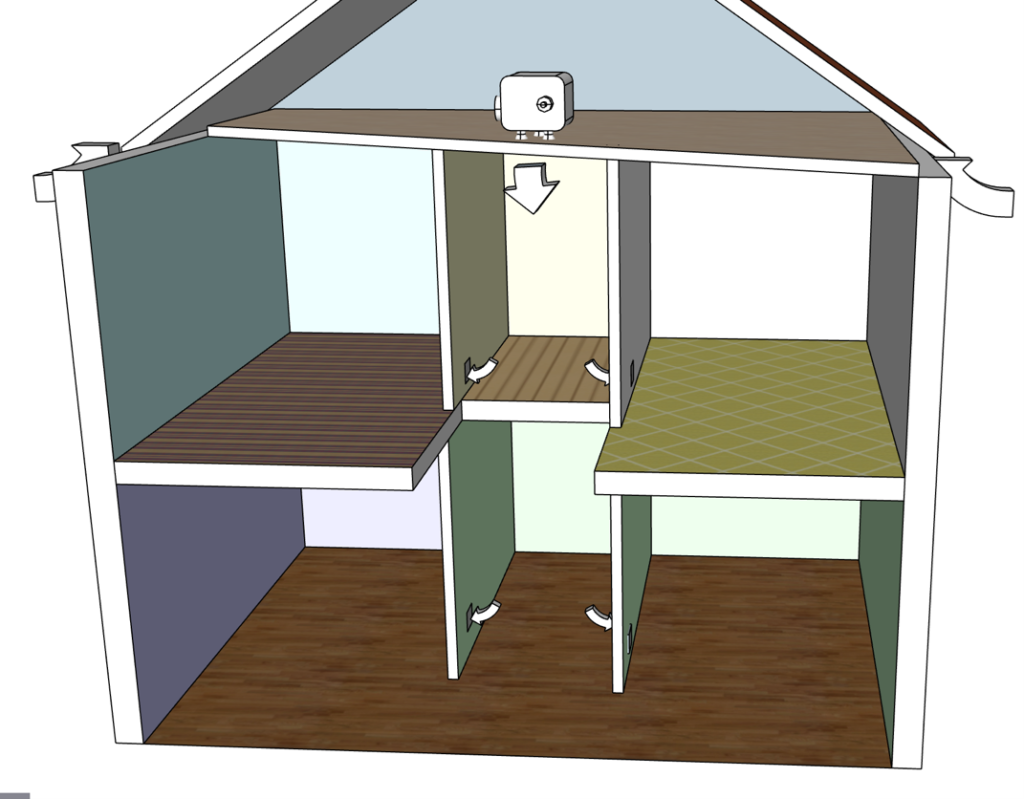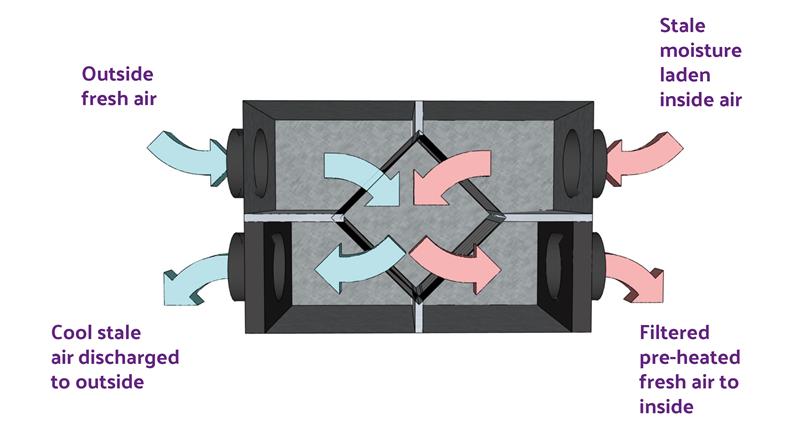Why Ventilation is Important and the Options Available for Homes
We all know that fresh air is essential for our physical and mental health, but with our homes becoming more airtight than ever with blocked up or no chimneys, well-sealed doors and windows, blocked air bricks and higher levels of insulation, indoor air quality is getting worse.
What is Condensation and How Does it affect the Home?
Condensation is the build up of excess moisture. When warm air comes into contact with a cold surface, it precipitates and this deposits as droplets of water. Generally, this happens more in winter when there’s a bigger temperature difference between inside and outside. When windows are less likely to be open in homes, this is the perfect condition for condensation to form.
With doors and windows retaining warm air better than ever, gases and humidity can build up causing condensation. People, pets, drying washing, cooking and showering are all moisture generators in our home which produce condensation on windows.

While condensation itself isn’t generally a problem, if it is not treated, it can cause damp patches to form where subsequently mould, spores and mildew can grow. This can lead to health issues with some people being sensitive to them, causing symptoms such as nasal stuffiness, throat irritation, coughing and eye and skin irritation. As well as these health issues, it can also cause black mould which stains and damages walls and ceilings, as mould eats or digests whatever it is growing on. This could eventually cause structural damage to building materials.

This is why ventilation is so important as the circulation of fresh air prevents condensation from developing to create a healthier home.
How to Ventilate your Home
There are two ways to ventilate your home and ensure it gets the fresh air it needs:
- Purge ventilation – when doors and windows are opened to allow fresh air into the property at a low level continuously.
- Background ventilation – whole house ventilation systems that allows the introduction of fresh outside air into a habitable room without opening a window.
Background Ventilation Methods
There are multiple methods of background ventilation that can be installed in homes to increase the flow of external air without opening a window. Typically, these systems are better at reducing heat loss, sound pollution and are usually highly controllable.
- Window Trickle Ventilators
Window trickle vents are generally the cheapest method of complying with background ventilation requirements. However, consumers have highlighted issues they have experienced when using these systems, for example, they can be noisy, draughty and act as a home to spiders. There is also no control over when external air can enter the home. These issues generally put homeowners off from wanting to have them installed.

- Passive Wall Ventilation
Passive wall ventilation is a method of acquiring fresh air into a room via a small hole in the wall. The vents are generally unobtrusive but there are products which are far more controllable, thermally efficient and better at sound proofing than window trickle vents.
They are quick and easy to install into existing properties and usually just involve drilling a hole into the wall around the same size as a modern gas boiler flue hole. They don’t need a power supply, so can be located anywhere in the room.
Triton Home Dry units are designed to ventilate rooms through a core drilled hole. The system can also provide a cleanable filter that reduces noise, thermal loss, and pollution ingress. One air brick ventilator is usually sufficient for a single room of up to 20m2 floor area, or alternatively two core drill ventilators can be installed.

Airoom replaces air bricks with vents that contain smart tech which detects internal air quality and opens and closes as required. The internal grill can be adapted to meet internal decorative requirements, so homeowners don’t need to worry about it looking out of place.
Each vent has replaceable batteries that last up to 3 years. It has a hub which connects to the internet and is independently validated to reduce whole house heat loss by up to 12% and improve airtightness by 9% over standard air vents. This can save homeowners up to £88 per year (at 2021 energy) prices with a typical payback period of around 3 years.

- Positive Input Ventilation (PIV)
Positive input ventilation works in the same way as an extractor fan that you would find in kitchens and bathrooms, but in reverse. The fan would generally work at a very low speed to minimise noise and would push fresh air into the room. They can be wall mounted or mounted in a loft and provide a filtered air input.

- Mechanical Heat Recovery Ventilation (MHRV)
This system provides houses with fresh filtered air whilst retaining most of the energy that has already been used in heating the building. It does this by moving both warm stale air and fresh air through a heat exchanger. The fresh air is warmed prior to entry into the property so it doesn’t cause heat loss or draughts. The units can also contain filters to help clean the air, and fans to direct the air flow. This is the best system to use but it costs several thousand pounds to install.

How do Building Regulations affect Ventilation?
The Government has created new Building Regulation requirements from 15th June 2022 that whenever more than 30% of a property’s windows are replaced, background ventilation should be provided to habitable rooms, as the new windows may be more airtight than those being replaced. Habitable rooms are living rooms, dining rooms, bedrooms etc. It excludes kitchens and bathrooms which generally have mechanical extraction methods, as well as hallways and utility rooms.

Do I need to Install Ventilation in my Home?
With Building Regulations being legally enforceable, there are potential fines for not complying with them. A window installer makes the legal declaration that their installation meets Building Regulations through a Competent Person Scheme on your behalf, but you as the homeowner, are ultimately responsible. You may have issues selling your home if the work carried out is not compliant with the Building Regulations.
At the time of ordering new windows, you must choose the type of background ventilation you require and declare it to your window installer to record within the installation contract. If you are using window trickle vents, these will be specified and installed as part of your window installation contract.
If you are choosing passive walls vents, the installer may be able to carry out this work for you as part of the window replacement work to minimise disruption. Alternatively, you can choose another contractor to carry out this work. Some installers may carry out PIV or MHRV but generally this would be carried out by a separate contractor.
Where you choose passive wall vents, PIV or MHRV installation, then you must declare this to the installer in the window installation contract documentation and also endeavour to have the work carried out in a timely manner from when the window installation work takes place.
For extra advice on ventilation, search for your local Certified Competent installer here.


